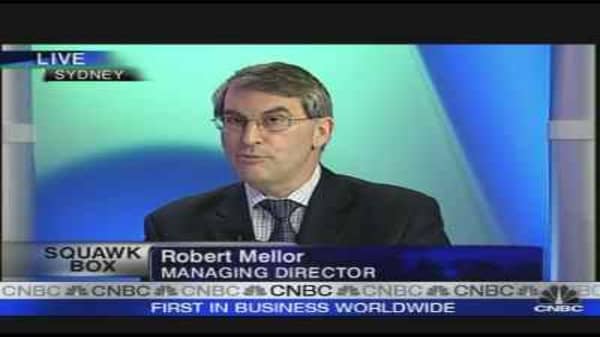Australian employment staged a surprisingly strong revival in June while the jobless rate ticked down toward three-decade lows, keeping alive the risk that a drum-tight labour market could fuel inflationary pressures.
The Australian dollar jumped half a U.S. cent after the government reported employment rose by a net 29,800 in June, easily beating forecasts of a 10,000 gain.
That made up for a revised 25,600 drop in May, while the unemployment rate dipped to 4.2 percent, from 4.3 percent in May and back toward February's historic low of 3.9 percent.
"It shows surprising strength," said Brian Redican, a senior economist at Macquarie. "The trend is still for a slowdown but this suggests any decline in jobs won't be precipitous, which should support incomes and sentiment going forward."
Such help was needed as a survey of consumers released earlier in the week showed confidence plumbing 16-year lows amid record petrol prices and a slumping share market.
Businesses were paring their hiring intentions, while the country's top home and car insurer, Insurance Australia Group, this week cut 600 jobs, or 5 percent of its workforce.
"The June rebound does help offset the very high degree of pessimism that's prevailing," said Michael Workman, a senior economist at Commonwealth Bank.
"It's one of those things you would put on a ledger that indicates rates need to go up again," he added. "I would imagine the next few policy meetings will be a fairly close call."
The Reserve Bank of Australia (RBA) lifted interest rates twice early this year to cool the economy and restrain inflation. It has since left them steady at 7.25 percent for four straight months, citing evidence that domestic demand was slowing enough to curb inflation over time.
No Room For Error
However, a report from the International Monetary Fund on Thursday suggested there was little room for error.
The IMF felt growth could turn out to be stronger than expected thanks to a huge jump in the price of Australia's major commodity exports, sizable immigration flows, and an increase in state infrastructure spending.
That in turn meant inflation might not slow as hoped.
"With the risks to inflation on the upside, the RBA should be prepared to tighten quickly if leading indicators suggest that domestic demand will not slow as expected or the outlook for inflation deteriorates," the IMF warned.
In particular the IMF saw a risk that wage claims could pick up if CPI inflation stays high.
A survey of consumers from the Melbourne Institute on Thursday showed people expected inflation to average 5.9 percent over the year ahead, well above the RBA's comfort band.
Yet, wage growth has been remarkably restrained at around 4.0 percent a year, short of the 4.5 percent barrier that analysts consider a threat to inflation.
Indeed, figures out this week showed pay settlements in enterprise bargaining ran at an annual 3.7 percent in the first quarter, down from 3.8 percent the previous quarter.
That restraint owes much to record levels of skilled migration into Australia and a run-up in participation, with more women in particular joining the labour force.
"The key going forward is the flexibility and mobility of the labour market," said Stephen Halmarick, co-head of market economics at Citi.
"How willing people in suburbs of Sydney and Melbourne will be to continue to move to where the jobs are, that's going to be the secret to the performance of the labour market,' he added.




